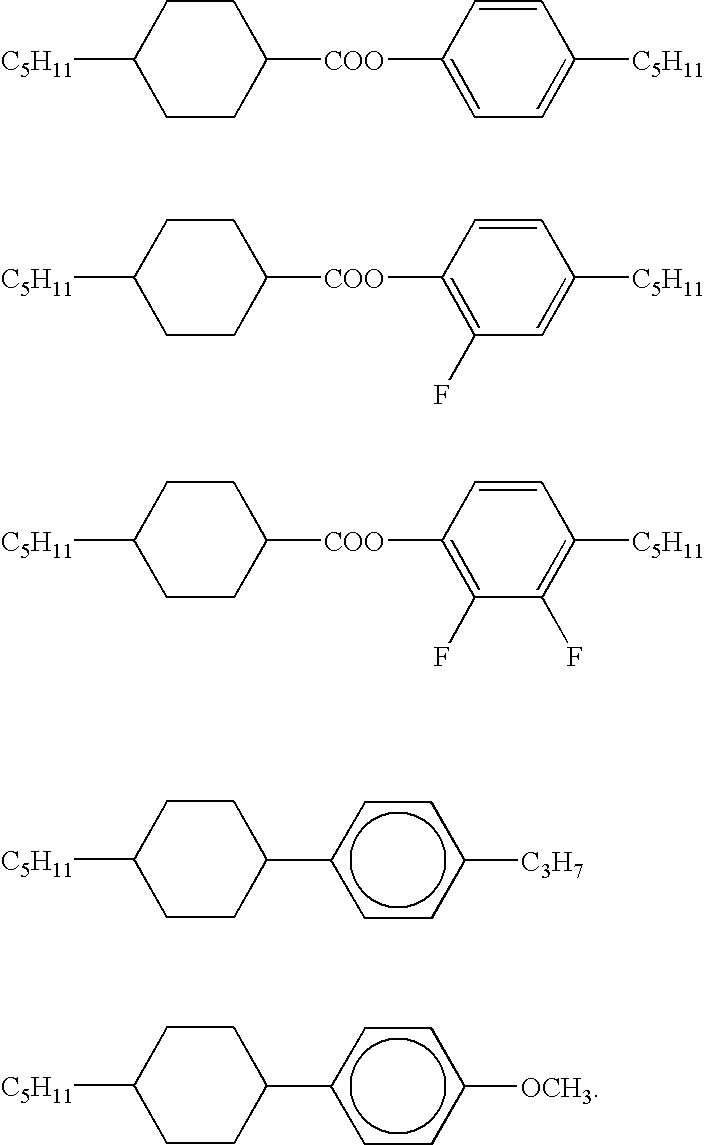Switchable volume hologram materials and devices
a hologram and volume technology, applied in the field of hologram materials and devices with switchable volume, can solve the problems of inability to change the optical characteristics inability to offer, and complex manufacturing of the prior art device, so as to reduce the switching voltage of the subwavelength grating, improve the quality of the hologram grating, and improve the effect of holographic grating quality
- Summary
- Abstract
- Description
- Claims
- Application Information
AI Technical Summary
Benefits of technology
Problems solved by technology
Method used
Image
Examples
Embodiment Construction
. Copending patent applications Ser. Nos. 08 / 273,436 and 08 / 273,437 Sutherland et al., titled "Switchable Volume Hologram Materials and Devices," and "Laser Wavelength Detection and Energy Dosimetry Badge," respectively, also incorporated herein by reference include background material on the formation of transmission gratings inside volume holograms.
[0054] The process by which a hologram is formed according to the invention is controlled primarily by the choice of components used to prepare the homogeneous starting mixture, and to a lesser extent by the intensity of the incident light pattern. The preferred polymer-dispersed liquid crystal ("PDLC") material employed in the practice of the present invention creates a switchable hologram in a single step. A new feature of the preferred PDLC material is that illumination by an inhomogeneous, coherent light pattern initiates a patterned, anisotropic diffusion (or counter diffusion) of polymerizable monomer and second phase material, pa...
PUM
| Property | Measurement | Unit |
|---|---|---|
| thickness | aaaaa | aaaaa |
| voltages | aaaaa | aaaaa |
| wt % | aaaaa | aaaaa |
Abstract
Description
Claims
Application Information
 Login to View More
Login to View More - R&D
- Intellectual Property
- Life Sciences
- Materials
- Tech Scout
- Unparalleled Data Quality
- Higher Quality Content
- 60% Fewer Hallucinations
Browse by: Latest US Patents, China's latest patents, Technical Efficacy Thesaurus, Application Domain, Technology Topic, Popular Technical Reports.
© 2025 PatSnap. All rights reserved.Legal|Privacy policy|Modern Slavery Act Transparency Statement|Sitemap|About US| Contact US: help@patsnap.com



